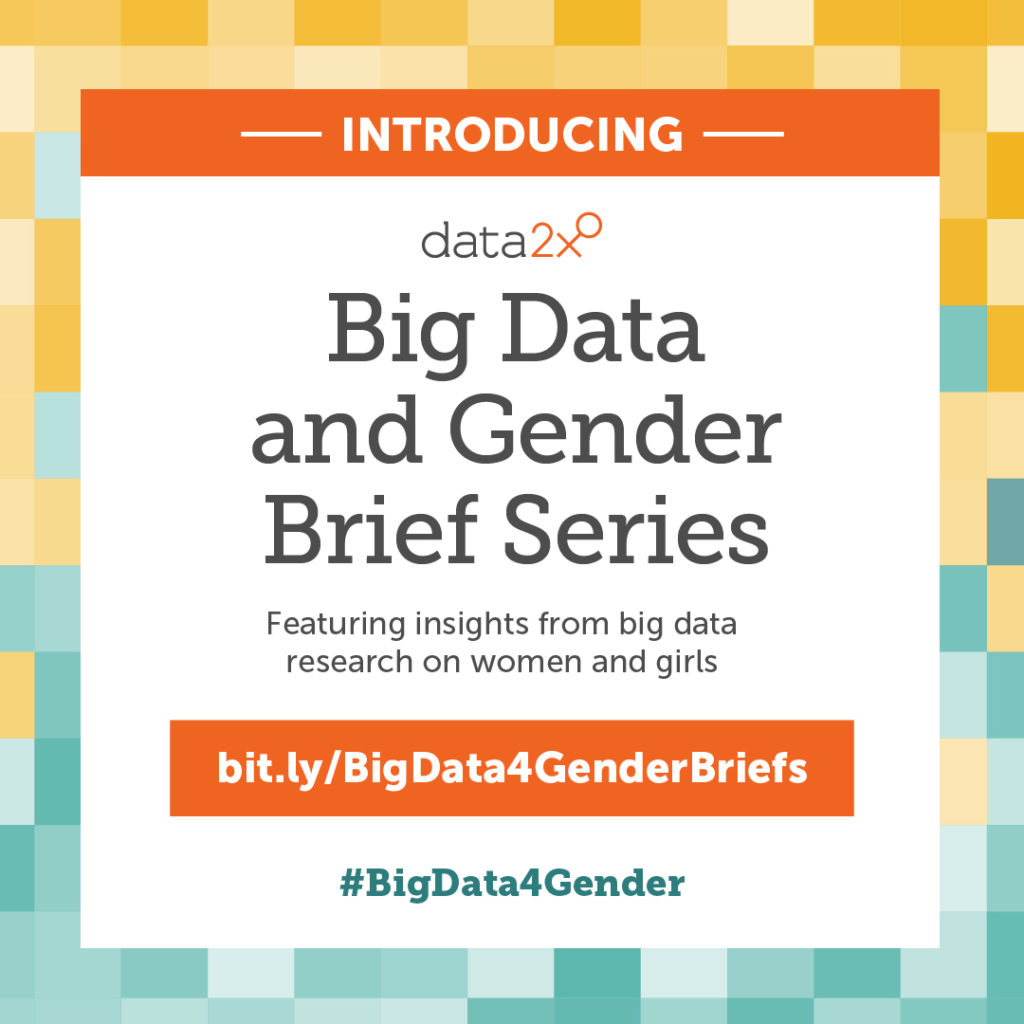How can insights from big data be used to improve understanding of the lived realities of women and girls?
In September 2017, Data2X awarded grants to ten research projects through the Big Data and Gender Challenge. These projects were selected from a pool of over 125 proposals. They represented 29 researchers, from 20 institutions, across 8 countries, but they all had one common goal: to apply big data innovations to fill gender data gaps and improve understanding on key aspects of girls’ and women’s lives.
The “Big Data and Gender Brief Series” includes briefs summarizing the main findings and implications of each of the projects funded through the Big Data and Gender Challenge. New briefs will be added throughout the months of September and October.

- Gender Gaps in Urban Mobility by The GovLab, UNICEF, Universidad Del Desarrollo, Telefónica R&D Center, ISI Foundation, and University of Bologna
Using mobile phone records, this project examines the gendered aspects of mobility in Chile, and concludes that this data can help policymakers design more gender-inclusive urban transport systems. Read this brief. Read the full report.
- Educational Inequality and Mobile Phone Data by Muhammad Raza Khan, UC Berkeley School of Information
This project examines how mobile phone data can highlight gendered educational inequalities by predicting net primary enrollment rates of children in Pakistan, which can help redirect policy attention towards areas with persistent gender inequalities in education. Read this brief. Read the full report.
- Mobile Money & Gender in Uganda by Dalberg Data Insights
Using sex-disaggregated mobile phone data, this project examines gender-related differences in mobile phone access and usage with the goal of directing policy attention toward alleviating the economic and social constraints women face. Read this brief. Read the full report.
- Street Harassment and Women’s Educational Choices: A Geospatial Analysis by Girija Borker, World Bank/Brown University (PhD)
Using data from student surveys, Google Maps, and mobile applications, this project looks at how safety concerns influence educational choices among women and finds that policies to increase safety of travel routes can have major impact on reducing gender gaps in school quality, transport costs, and commute time. Read this brief. Read the full report.
- Women and the Digital Gig Economy in South Africa by Emma Samman and Abigail Hunt, Overseas Development Institute
This project analyzes data to understand women’s involvement in gig work in South Africa, finding that there is a strong need for policymakers and companies to improve economic security, support unpaid childcare, give workers more flexibility over schedules, and ensure worker safety to make the gig economy work for marginalized people. Read this brief. Read the full report.
- Using Facebook and Google Advertising Data to Measure the Gender Digital Divide by Ridhi Kashyap (University of Oxford), Ingmar Weber (Qatar Computing Research Institute), Masoomali Fatehkia (Qatar Computing Research Institute), Ian Knowles (University of Oxford), and Reham Al Tamime (University of Southampton)
This project demonstrates that data from Facebook and Google’s online advertising platforms can help fill the global gender digital divide data gap, especially when combined with offline gender and economic indicators, and finds that this data could be used to inform policies to target digital gender inequalities and improved access to technology. Read this brief.
- Mining the Web for Insights on Violence Against Women by Jihad Zahir, Hajar Mousannif, et al., Cadi Ayyad University
This project demonstrates that data from social media platforms can be used to fill the gap in analyzing attitudes and social norms around gender-based violence (GBV) that are often hard-to-measure due to cost, time, and bias constraints. The ability to measure attitudes around GBV using this data has long-term implications for creating effective interventions to eliminate violence against women. Read this brief.
- Towards High-Resolution Sex-Disaggregated Dynamic Mapping by Flowminder Foundation
This project finds that combining traditional survey data sources with digital data (including geolocated survey data, satellite imagery, and mobile phone data) can provide a more detailed understanding of women’s and girls’ lives which can be used for informing resource allocation and more generally monitoring progress toward the SDGs. Read this brief.
